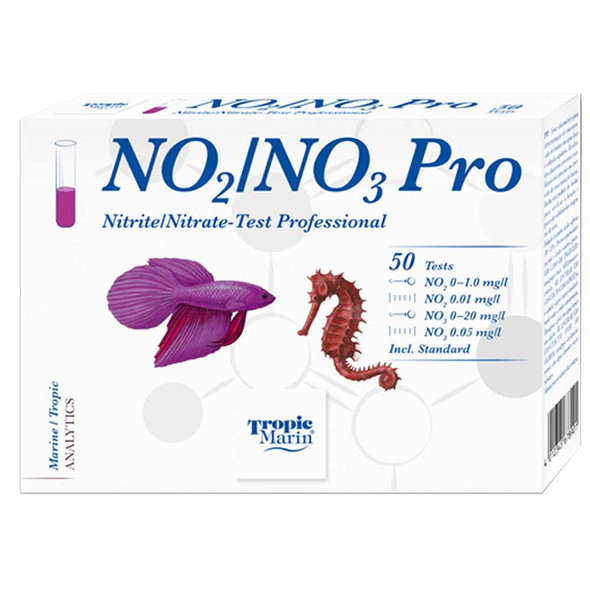Description
The carbonate hardness (KH)* or alkalinity* of a water sample characterizes the buffering ability, ie the ability to maintain the pH value of the water. It is largely determined by the proportion of hydrogen carbonate ions in the water. As the pH increases, other basic ions such as hydroxide ions also contribute to the alkalinity.
The carbonate hardness should be checked very regularly in all aquariums. If the alkalinity in the aquarium is too low, the pH value can drop (acidity drop), which is life-threatening for many fish and invertebrates. In reef aquariums, adequate carbonate hardness is essential for vigorous coral growth. On the other hand, too high a carbonate hardness in seawater tanks can lead to limescale precipitation and also have a negative impact on coral growth.
*In water chemistry there are several terms to describe the buffering ability with different definitions. The term “carbonate hardness” is common in aquaristics; however, the alkalinity is measured. In this test, both terms are used interchangeably.
The carbonate hardness is usually given in degrees of German hardness (°dH). A table for conversion into other common units (e.g. the equivalence unit milllival per liter (mval/l) or the amount of substance in mmol/l) can be found on the cover page.
The carbonate hardness in the oceans is 6.5 °dH. In a saltwater aquarium, the carbonate hardness should be between 6 and 9 °dH. In freshwater aquariums, the carbonate hardness should not fall below 3 °dH. The optimal value for the alkalinity in the freshwater aquarium depends on the fish and plant species to be maintained. Ask your retailer about the correct carbonate hardness for your pool.
- 10mL Reagent A
- 50mL Reagent B
- 1 glass cuvette 10 ml
- 1 dosing syringe 5 ml
- 1 dosing syringe 1 ml with attachment
- 1 instruction manual
Note: Submerge the syringe in the liquid as you draw it up. The dosing syringes are always read from the plunger, even if there is air between the plunger and the liquid (due to the dead volume of the syringe attachment, see figure). The air bubble does not affect the test result.
- Shake dropper bottles before use!
- Rinse the glass cuvette with tap water and then several times with aquarium water.
- Using the dosing syringe, fill exactly 5 ml of aquarium water into the glass cuvette.
- Then add 3 drops of reagent A (indicator) and gently swirl the cuvette. The water sample turns turquoise blue.
- Attach the enclosed syringe attachment to the small syringe and draw up 1 ml of reagent B (titrator).
- Now add reagent B from the syringe drop by drop to the water sample until the color has changed from turquoise blue to dark blue and violet to clear pink. Gently swirl the cuvette after each drop. The measurement is complete when the color of the sample has reached a clear shade of pink without a blue tinge (see color fields on the packaging).
- The consumption of reagent B (difference to 1 ml) multiplied by 10 gives the carbonate hardness in °dH. Example : If the lower end of the syringe plunger is at 0.28 ml after the end of the titration, then the consumption of reagent B is 0.72 ml (difference to 1 ml). 0.72 x 10 = 7.2. The carbonate hardness of the aquarium water is 7.2 °dH. For a larger range of test reagents or for hard water over 10 °dH, the test can be carried out with a 2.5 ml sample. Proceed as described above and, after the end of the titration, multiply the consumption of reagent B by 20.
- After the measurement process, rinse the glass cuvette and syringe thoroughly with tap water.
Shelf life and storage:
6 months after opening. Store in a cool and dark area.







